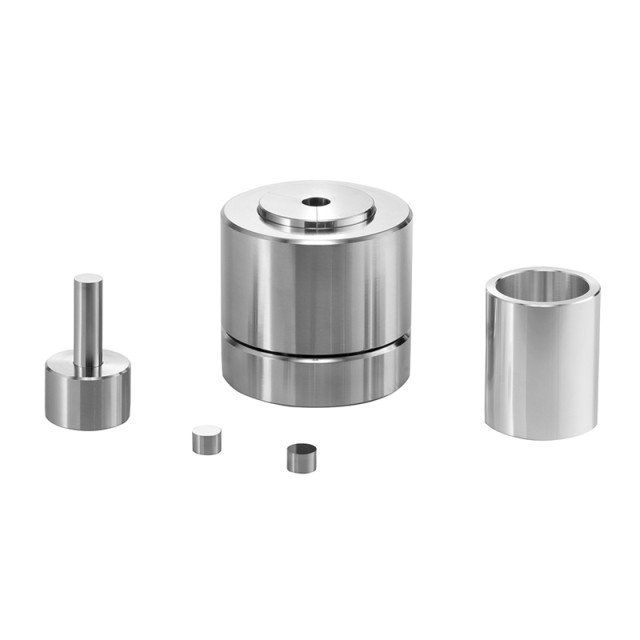
Molds & Accessories
Assemble Lab Cylindrical Press Mold
Item Number : PMAC
Price varies based on specs and customizations
- Material
- ASSAB+17 / Cr12MoV
- Indenter hardness
- HRC68-HRC70 / HRC60-HRC62
- Cavity depth
- 30-60 mm
Shipping:
Contact us to get shipping details Enjoy On-time Dispatch Guarantee.
Why Choose Us
Reliable PartnerEasy ordering process, quality products, and dedicated support for your business success.
Applications
Assemble Lab Cylindrical Press mold is suitable for the molding of ultra-fine powder or samples that are prone to delamination and cracking. The mold solves the problem of sample failure caused by the expansion and deformation of the sample during the demolding process by quickly disassembling the mold jacket.
The mold is widely used in battery, superconductor, cement, ceramics, catalysis, silicate, powder metallurgy, sea mud analysis, biochemical analysis and new material sample preparation research and development. In addition, the product can also be used with calcium iron, infrared, X-ray fluorescence and other testing instruments.
The mold is made of Japanese high-speed steel, high hardness, no deformation, long service life.
Special sizes press molds can be customized according to customer requirements.
Detail & Parts
![Round petal mold [Φ3-10mm]](https://image.kindle-tech.com/images/products/118/d040717e782af44954c3ea0fe0f70dbf67bc140895c78.jpg)
![Round flap mold [Φ11-20mm]](https://image.kindle-tech.com/images/products/118/c31af689175091cf4d5c0dcef7ba0d5d67bc142f20306.jpg)
![Round flap mold [Φ21-40mm]](https://image.kindle-tech.com/images/products/118/85c7b5046e927da8138e0536d2bae53e67bc145562df6.jpg)
![Round flap mold [Φ41-60mm]](https://image.kindle-tech.com/images/products/118/00c546f2f8f7c53268364e71a0bf0d3767bc1718c467f.jpg)
![Round flap mold [Φ61-80mm]](https://image.kindle-tech.com/images/products/118/fc0ffa840af455f3820dcb954198313a67bc14be6a798.jpg)
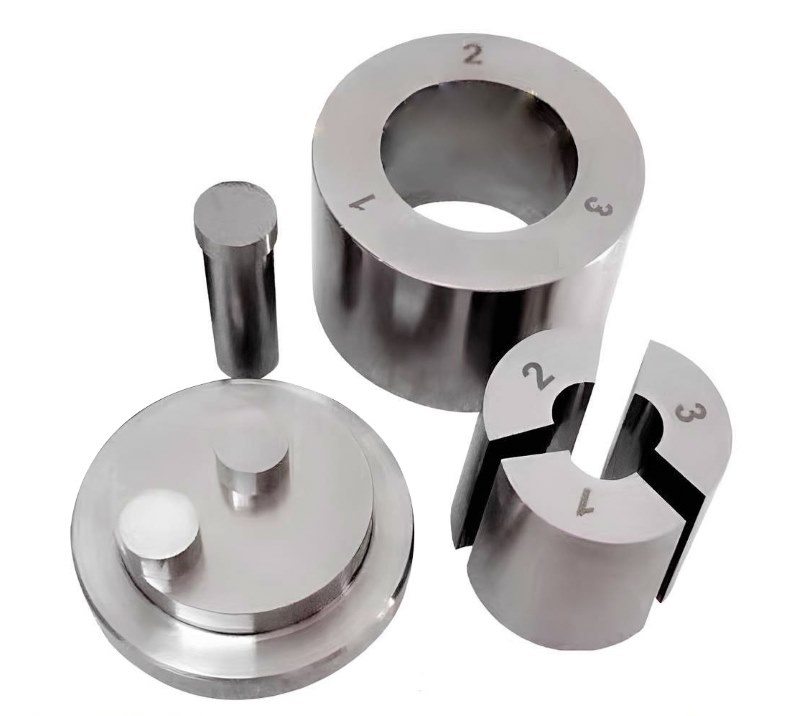



Technical specifications
| Model | PMAC-A | PMAC-B | PMAC-C | PMAC-D | PMAC-E |
|---|---|---|---|---|---|
| Material | Cr12MoV | ||||
| Indenter hardness | HRC60-HRC62 | ||||
| Sample size | Φ3、Φ4、Φ5、Φ6、Φ8、Φ10mm (M) | Φ12、Φ13、Φ15、Φ18、Φ20mm (M) | Φ30、Φ40mm (M) | Φ50、Φ60mm (M) | Φ70、Φ80 mm (M) |
| Cavity depth | 30mm (N) | 40 mm (N) | 50 mm (N) | 55 mm (N) | 60 mm (N) |
| External dimensions | Φ43*93mm(L*H) | Φ53*120mm(L*H) | Φ73*133mm、Φ95*133mm(L*H) | Φ115*150mm、Φ127*150mm (L*H) | Φ153*180mm、Φ180*180mm(L*H) |
| Weight(Kg) | 0.75Kg | 1.2Kg | 3.8Kg、6.3Kg | 14Kg、20Kg | 30Kg、40Kg |
| Other sizes can be customized | |||||
Operation steps
Cylindrical open-flap mold is suitable for the forming of ultra-fine powder or sample which is easy to be delaminated and cracked . The mold can solve the problem of sample deforming caused by sample expansion and deformation during the demoulding process by quickly opening the mold outer cover.

Step 1: Assemble the die according to the operation diagram and install the sample in the cavity.

Step 2: Put the die in the center of the hydraulic press and pressurize to required pressure.

Step 3: Assemble the die according to the release diagram , eject the sample out of the die bushing with the screw rod.

Step 4: Take out the die from the hydraulic press , and remove the sample gently.
Precautions for mold maintenance
To ensure accurate test results, clean the mold surface with dust-free paper before each use to avoid the anti-rust oil from affecting the sample. Avoid exceeding the maximum pressure when applying pressure. Clean the mold and samples after use to prevent corrosion. Apply anti-rust oil and store the mold in a dry environment if not used for a long time to prevent damage.
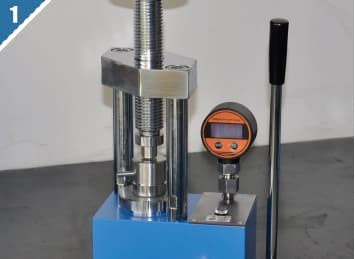
Step 1: Placing the Mold.
To begin, place the mold in the center of the tablet press. It is important to note that the maximum pressure of the mold cannot be exceeded when pressurized. This will prevent any damage to the mold and ensure accurate test results.
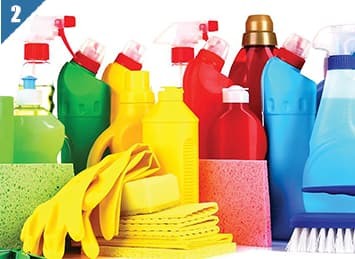
Step 2: Cleaning the Mold.
After each use, it is essential to clean the mold to prevent any contamination of the sample. Using dust-free paper, wipe the surface of the mold clean. If there are sample residues on the surface that cannot be removed, please do not use chemical reagents to clean and soak. This could potentially damage the mold and impact the accuracy of the test results.
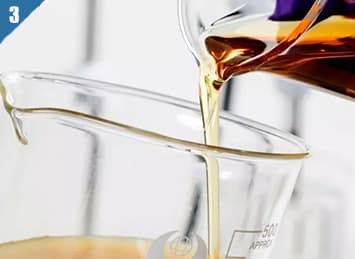
Step 3: Applying Anti-Rust Oil.
If the mold is not used for an extended period, it is recommended to apply anti-rust oil on the surface of the mold to prevent rusting. This step will help prolong the life of the mold and ensure that it remains in good condition for future use.

Step 4: Storing the Mold.
Lastly, if the mold is not used for a long time, it needs to be stored in a dry environment. This will prevent any moisture from accumulating on the mold and causing damage.
Full range of lab press types

Click to view our full range of lab press products.
Any question? Our experts have helped many laboratories choose their lab press, contact us now!
Full range of types of laboratory press molds
We have a full range of molds for you to choose from, and the molds fit the body perfectly.
If you need molds with special shapes, we can also customize them for you.

Warnings
Operator safety is the top important issue! Please operate the equipment with cautions. Working with inflammable& explosive or toxic gases is very dangerous, operators must take all necessary precautions before starting the equipment. Working with positive pressure inside the reactors or chambers is dangerous, operator must fellow the safety procedures strictly. Extra caution must also be taken when operating with air-reactive materials, especially under vacuum. A leak can draw air into the apparatus and cause a violent reaction to occur.
Designed for You
KinTek provide deep custom made service and equipment to worldwide customers, our specialized teamwork and rich experienced engineers are capable to undertake the custom tailoring hardware and software equipment requirements, and help our customer to build up the exclusive and personalized equipment and solution!
Would you please drop your ideas to us, our engineers are ready for you now!
FAQ
What Is A Lab Press?
What Is A Press Mold?
What Is The Purpose Of A Hydraulic Press In Lab?
What Is Press Mould In Ceramics?
What Are Different Type Of Lab Presses?
How Are Pellet Molds Used?
What Types Of Materials Can Be Pelletized Using Pellet Molds?
How Can One Select The Appropriate Pellet Mold For Their Specific Application?
4.8
out of
5
This lab press mold is a game-changer! It makes sample prep a breeze, and the results are always consistent and accurate.
4.9
out of
5
I was skeptical at first, but this press mold has exceeded my expectations. It's easy to use and produces high-quality samples every time.
4.7
out of
5
This is the best lab press mold I've ever used. It's durable, easy to clean, and produces perfect samples every time.
5.0
out of
5
I highly recommend this press mold to anyone who needs to prepare samples for analysis. It's a great value for the price.
4.8
out of
5
This press mold is a must-have for any lab. It's simple to use and produces consistent, high-quality results.
4.9
out of
5
I'm so glad I purchased this press mold. It's made my sample prep process so much easier and faster.
4.7
out of
5
This is a great product. It's well-made and produces excellent results. I would definitely recommend it to others.
5.0
out of
5
I'm very impressed with this press mold. It's easy to use and produces high-quality samples. I highly recommend it.
4.8
out of
5
This is a great value for the price. It's a well-made product that produces consistent results.
4.9
out of
5
I'm very happy with this press mold. It's easy to use and clean, and it produces great results.
4.7
out of
5
This is a great product. It's well-made and produces excellent results. I would definitely recommend it to others.
5.0
out of
5
I'm very impressed with this press mold. It's easy to use and produces high-quality samples. I highly recommend it.
4.8
out of
5
This is a great value for the price. It's a well-made product that produces consistent results.
4.9
out of
5
I'm very happy with this press mold. It's easy to use and clean, and it produces great results.
4.7
out of
5
This is a great product. It's well-made and produces excellent results. I would definitely recommend it to others.
REQUEST A QUOTE
Our professional team will reply to you within one business day. Please feel free to contact us!
Related Products

Cylindrical Press Mold for Lab Applications
Efficiently form and test most samples with Cylindrical Press Molds in a range of sizes. Made of Japanese high-speed steel, with long service life and customizable sizes.

Assemble Square Lab Press Mold for Laboratory Applications
Achieve perfect sample preparation with Assemble Square Lab Press Mold. Quick disassembly eliminates sample deformation. Perfect for battery, cement, ceramics, and more. Customizable sizes available.

Special Shape Press Mold for Lab
Discover high-pressure special shape press molds for diverse applications, from ceramics to automotive parts. Ideal for precise, efficient molding of various shapes and sizes.
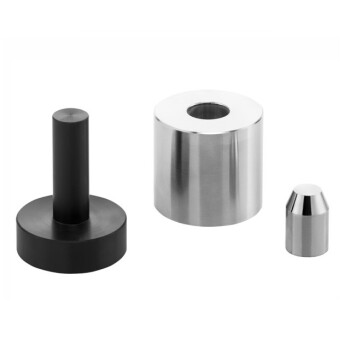
Button Battery Tablet Press Sealing Mold for Lab Use
The sealing die is essential for assembling button batteries, ensuring components like the anode, cathode, and electrolyte are securely enclosed.

Cylindrical Lab Electric Heating Press Mold for Laboratory Applications
Efficiently prepare samples with Cylindrical Lab Electric Heating Press Mold. Fast heating, high temp & easy operation. Custom sizes available. Perfect for battery, ceramic & biochemical research.

Special Heat Press Mold for Lab Use
Square, round and flat plate forming dies for hot presses.
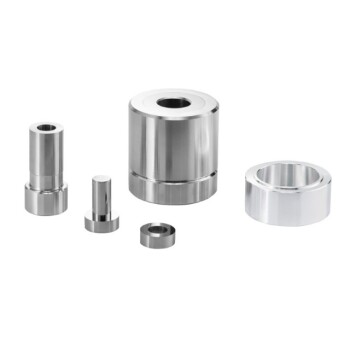
Ring Press Mold for Lab Applications
Ring Press Dies, also known as Circular Pellet Press Die Sets, are integral components in various industrial and laboratory processes.

Round Bidirectional Press Mold for Lab
The round bidirectional press mold is a specialized tool used in high-pressure molding processes, particularly for creating intricate shapes from metal powders.

No Demolding Lab Infrared Press Mold for Laboratory Applications
Effortlessly test your samples with no demolding required using our lab infrared press mold. Enjoy high transmittance and customizable sizes for your convenience.

Infrared Heating Quantitative Flat Plate Press Mold
Discover advanced infrared heating solutions with high-density insulation and precise PID control for uniform thermal performance in various applications.

Multi-Punch Rotary Tablet Press Mold Ring for Rotating Oval and Square Molds
The multi-punch rotary tablet press mold stands as a pivotal component in pharmaceutical and manufacturing industries, revolutionizing the process of tablet production. This intricate mold system comprises multiple punches and dies arranged in a circular fashion, facilitating rapid and efficient tablet formation.

Laboratory Ball Mill Jar Mill with Metal Alloy Grinding Jar and Balls
Grind and mill with ease using metal alloy grinding jars with balls. Choose from 304/316L stainless steel or tungsten carbide and optional liner materials. Compatible with various mills and features optional functions.
Related Articles

Ceramic Isostatic Pressing Mold Technology
Exploring the design and factors affecting ceramic isostatic pressing molds.

Pressing Powder Samples and Molding Polymer Films: A Comprehensive Guide
Pressing powder samples is done to create a solid material that remains intact even after the load is removed. This process involves pushing the powder grains closer together, closing the gaps between them and forcing them to flow and rearrange themselves into a more compact arrangement. As the available volume reduces, the flow of particles stops, and they undergo plastic and elastic deformations that result in bonding between the grains.

Comprehensive Guide to Cylindrical Lab Electric Heating Press Mold: Technology and Applications
Explore the advanced features and applications of cylindrical lab electric heating press molds. Learn about their working principles, types of heating technologies, and key benefits for precise sample preparation.

Comprehensive Guide to Isostatic Pressing Molds: Types, Processes, and Applications
Explore the detailed world of isostatic pressing molds, including types like wet bag and dry bag, their processes, and applications. Learn how these molds ensure uniform density and high-strength products.

Manual mechanical press operating steps
Introduction to the operating steps of manual mechanical press.

The Benchtop KBr Pellet Press: An Efficient Tool for Laboratory Use
The benchtop KBr pellet press is a versatile and efficient tool that produces uniform pellets, ensuring consistent and reliable results. In addition, its adjustable mold can be used flexibly to accommodate a variety of sample sizes and shapes.

CIP vs. Metal Mold Pressing What's the Difference
CIP and Metal Mold Pressing are used to create high-density components, but they differ in terms of the level of complexity required and the final outcome. Understanding these differences can help manufacturers determine which method is best suited for their needs.

Understanding the Importance and Applications of Laboratory Presses
Laboratory presses play a vital role in various industries, providing precision and consistency in demanding operations. These versatile machines are used for testing, compacting, and molding materials in sectors such as pharmaceutical, laminating, rubber, and plastic molding. Whether it's for R&D, limited production, or lean manufacturing, laboratory presses offer durability and rigorous demand fulfillment.

Comprehensive Guide to Metal Mold Pressing: Techniques, Equipment, and Applications
Explore the detailed process of metal mold pressing, including equipment, techniques, and applications. Learn how hydraulic presses shape materials like metal and rubber efficiently.

Infrared Heating Quantitative Flat Plate Mold: Design, Applications, and Benefits
Explore the advanced design and applications of infrared heating quantitative flat plate molds. Learn about their benefits in achieving uniform heat distribution and efficient processing.

Issues with Poor Demoulding in Manual Tablet Presses
Analyzes the causes of poor demoulding in manual tablet presses, focusing on powder, mold, machine body, and operator factors.

Beyond Brute Force: The Elegant Physics of Cold Isostatic Pressing Molds
Discover how flexible CIP molds, not rigid force, create perfectly uniform, high-density materials by mastering the principle of isostatic pressure.
